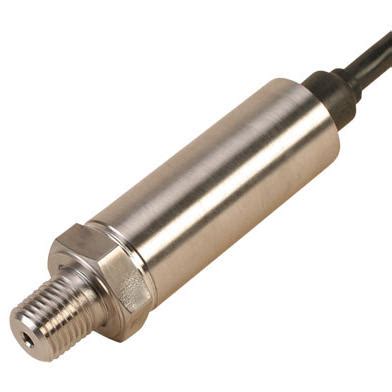高精度压力传感器耗电
HighPrecision Pressure Sensors: Technology, Applications, and Recommendations
Highprecision pressure sensors are crucial components in various industries, providing accurate measurements of pressure changes in diverse environments. Let's delve into the technology behind these sensors, explore their applications, and offer guidance on selecting the right sensor for specific needs.
Highprecision pressure sensors utilize advanced technologies to achieve accurate and reliable pressure measurements. Some common technologies include:
- Strain Gauge: These sensors use a flexible diaphragm that deforms under pressure, causing strain in a bonded resistive element. The change in resistance is proportional to the applied pressure.
- Piezoelectric: Piezoelectric materials generate electric charges when subjected to mechanical stress. Pressure applied to the material creates a deformation, resulting in a measurable voltage output.
- Capacitive: Capacitive sensors measure changes in capacitance resulting from the displacement of a diaphragm due to pressure. This change is converted into an electrical signal.

Highprecision pressure sensors find applications across various industries:
- Automotive: Used in engine control systems, tire pressure monitoring, and fuel injection systems for precise pressure measurements, improving performance and efficiency.
- Medical: Vital for blood pressure monitoring, respiratory assistance devices, and infusion pumps, ensuring accurate diagnostics and treatment.
- Aerospace: Critical for altitude measurement, cabin pressure control, and flight instrumentation, ensuring safety and performance in aircraft.
- Industrial: Employed in process control, leak detection, and hydraulic systems, facilitating precise monitoring and control of industrial processes.
- Environmental Monitoring: Used in weather stations, oceanography, and HVAC systems to measure atmospheric and fluid pressures, aiding in environmental analysis and control.
When choosing a highprecision pressure sensor, several factors should be considered:
- Accuracy: Select a sensor with high accuracy and minimal drift over time to ensure reliable measurements.
- Range: Choose a sensor with an appropriate pressure range for the intended application to avoid saturation or insufficient sensitivity.
- Resolution: Higher resolution sensors provide more detailed pressure readings, suitable for applications requiring fine pressure control.
- Response Time: Consider the sensor's response time, especially for dynamic pressure measurements or fastchanging environments.
- Environment: Ensure the sensor is compatible with the operating environment in terms of temperature, humidity, and pressure conditions.
- Calibration: Regular calibration is essential to maintain accuracy. Choose sensors with calibration options or consider calibration services provided by manufacturers.
- Cost: Balance the performance requirements with budget constraints to select a sensor offering the best value for the application.
Highprecision pressure sensors play a vital role in numerous industries, enabling precise pressure measurements for a wide range of applications. Understanding the technology, considering application requirements, and selecting the right sensor based on accuracy, range, resolution, and environmental factors are crucial for optimal performance. By following these guidelines, businesses can leverage highprecision pressure sensors to enhance efficiency, safety, and reliability across various domains.
